The diligence and talents of HUSTers have resulted in many recent breakthroughs in scientific research. Let’s have a look!
The research by Prof. Li Liang and his team on magnetically driven capsules was published in Nature Communications.
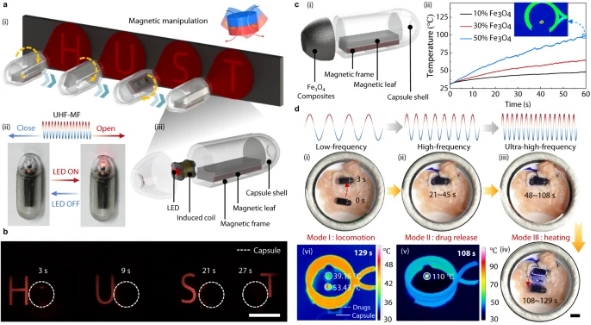
Magnetic excitation extension design and functional demonstration of MagCaps
On February 29, Prof. Li Liang and Prof. Cao Quanliang from the Wuhan National High Magnetic Field Center, along with their team, published a research paper named Magnetically driven capsules with multimodal response and multifunctionality for biomedical applications in Nature Communications. Through a comprehensive approach encompassing ideal models, animal ex vivo models, and in vivo assessment, they demonstrated the versatility of the developed magnetic capsules and their multiple potential applications in the biomedical field, such as targeted drug delivery and sampling, selective dual-drug release, and light/thermal-assisted therapy.
Prof. Zang Jianfeng and his team made breakthroughs in magnetic soft microfiberbots.
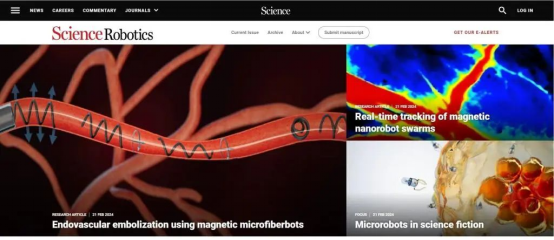
On February 21, Science Robotics published a paper titled Magnetic soft microfiberbots for robotic embolization, which was completed by Prof. Zang Jianfeng and his team from the School of Integrated Circuit of HUST, in collaboration with Prof. Tao Guangming from HUST and Academician Yang Guangzhong from Shanghai Jiao Tong University, respectively. They developed a magnetic, soft microfiberbot to perform remotely controlled robotic embolization. This work revealed the potential clinical value of their research, paving the way for a robotic embolization scheme in clinical settings.
The team led by Prof. Yuan Shuiqiao revealed the mechanism of stress granule disassembly and its impact on male fertility.
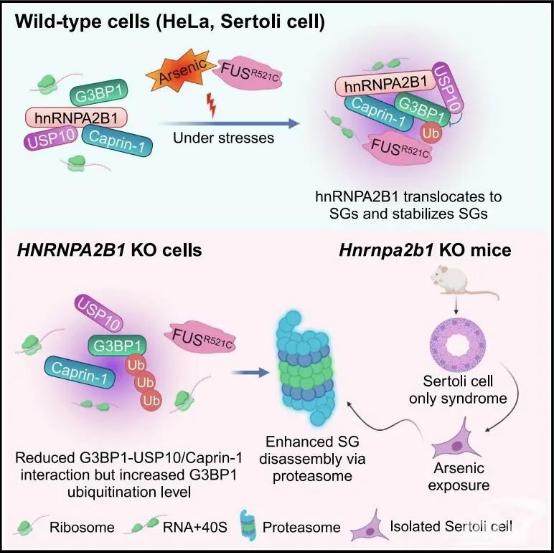
hnRNPA2B1 regulates the disassembly of stress granules and spermatogenesis
On February 16, Prof. Yuan Shuiqiao, Associate Prof. Wang Xiaoli and their team from the Institute of Reproductive Health of HUST published the latest research in Cell Reports, titled hnRNPA2B1 represses the disassembly of arsenite-induced stress granules and is essential for male fertility. It demonstrated that hnRNPA2B1 regulates SG disassembly and is essential for male fertility in mice.
The team led by Prof. Ning Kang made new progress in exploring the genome and gene catalog of high-altitude aquatic microbiomes.
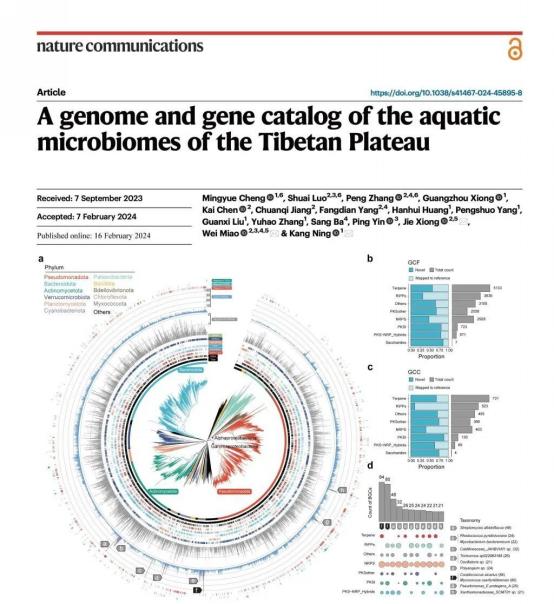
On February 16, Prof. Ning Kang and his team from the School of Life Science and Technology of HUST, in collaboration with Prof. Miao Wei and his team from the Institute of Hydrobiology, Chinese Academy of Sciences, published their paper titled A genome and gene catalog of the aquatic microbiomes of the Tibetan Plateau in Nature Communications. It showed that the Tibetan Plateau Microbial Catalog can provide great potential for discovering novel lineages and functions, and bridging knowledge gaps in microbiome biogeography.
Research from Tongji Hospital revealed the malignant development pattern of clear cell renal cell carcinoma (ccRCC).
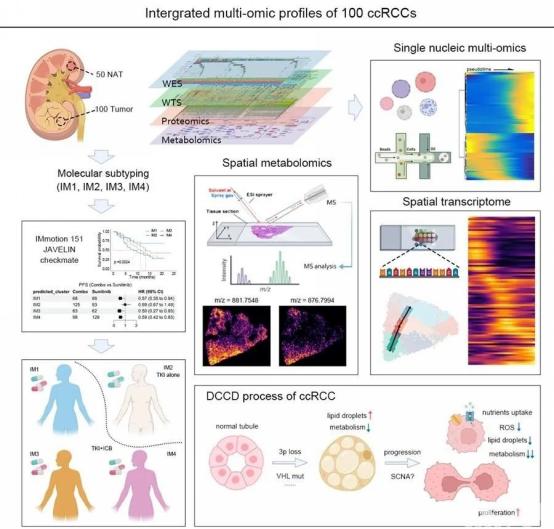
On February 15, Prof. Chen Ke, Prof. Wang Shaogang, Prof. Guan Wei, and Prof. Tao Zhen from Tongji Hospital, HUST, along with Prof. Ren Shancheng from Shanghai Changzheng Hospital, Naval Medical University, jointly published their paper in Nature Genetics, titled Multi-omic profiling of clear cell renal cell carcinoma identifies metabolic reprogramming associated with disease progression. The study suggested a treatment strategy based on subtype-specific immune cell infiltration that could guide the clinical management of ccRCC.
The team of Prof. Tang Jiang and Prof. Luo Jiajun discussed the potential applications of vapor-deposited perovskite light-emitting diodes.

Prototype applications of vapor-deposited PeLEDs
On February 13, the article Vapor-deposited perovskite light-emitting diodes was published in Nature Reviews Materials, authored by the team of Prof. Tang Jiang and Associate Prof. Luo Jiajun from the Wuhan National Laboratory for Optoelectronics of HUST, in collaboration with the team led by Rashid bin Mohd Yusoff from Universiti Teknologi Malaysia. This perspective article examines the development of vapor-deposited PeLEDs, particularly emphasizing the underlying factors that limit their performance compared with their solution-processed counterparts.
The team led by Prof. Wang Deli and Prof. Huang Yunhui made new progress in lithium metal batteries.
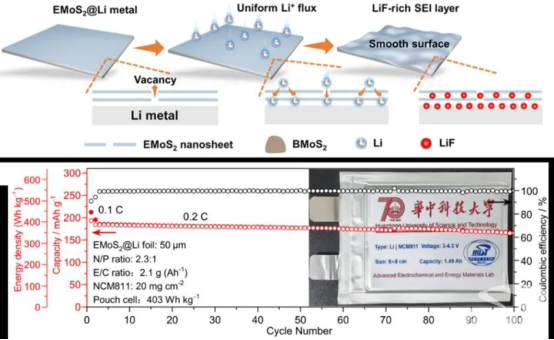
EMoS2 SEI in lithium metal batteries and cycling performance of EMoS2
On February 13, Advanced Materials published a research paper titled Sulfur Vacancies and 1T Phase-Rich MoS2 Nanosheets as an Artificial Solid Electrolyte Interphase for 400 Wh kg−1 Lithium Metal Batteries by the team of Prof. Wang Deli from the School of Chemistry and Chemical Engineering and Prof. Huang Yunhui from the School of Materials Science and Engineering of HUST. The strategy of constructing an artificial SEI by sulfur vacancies-rich and 1T phase-rich ultrathin MoS2 nanosheets can provide new guidance to realize high-energy-density LMBs with long cycling stability.
The team led by Prof. Wang Weimin discovered a new immune regulatory function of trans fatty acids.
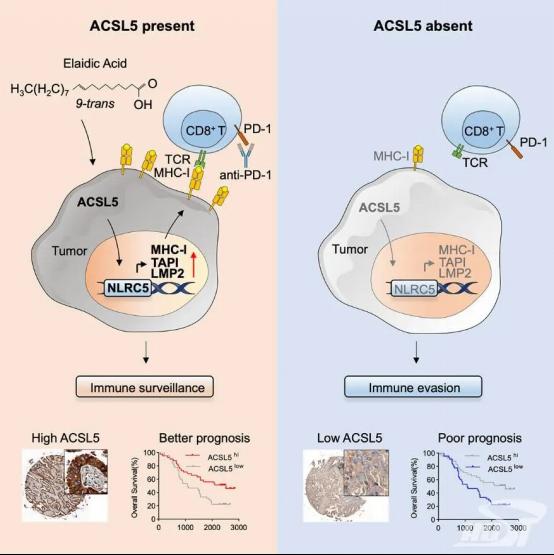
On February 12, the research paper titled Dietary elaidic acid boosts tumoral antigen presentation and cancer immunity via ACSL5 was published in Cell Metabolism by the team of Wang Weimin and Lu Fujia from the School of Basic Medicine of HUST, in collaboration with the team led by Chu Qian from Tongji Hospital of HUST. Their findings provide a foundation for enhancing immunotherapy through either targeting ACSL5 or metabolic reprogramming of antigen presentation via dietary EA supplementation.
The team led by Prof. Ding Lieyun gained latest developments in extraterrestrial construction materials.

Properties and characterization of regolith-based materials for construction
On February 7, the team led by Prof. Ding Lieyun from the School of Civil and Hydraulic Engineering published an article titled Properties and Characteristics of Regolith-Based Materials for Extraterrestrial Construction in Engineering. A comprehensive survey and comparison of materials from the perspective of performance was conducted to provide suggestions for material selection and optimization.
Prof. Fu Yingshuang and his team published their research in Nature Communications.
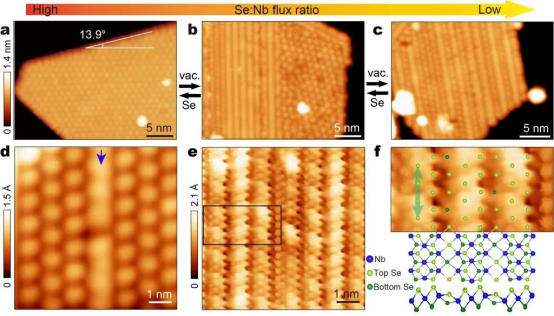
Growth and morphology of stripe-phase monolayer NbSe2
On February 3, Nature Communications published the latest research by Prof. Fu Yingshuang and his team from the School of Physics of HUST, titled Charge-density wave mediated quasi-one-dimensional Kondo lattice in stripe-phase monolayer 1T-NbSe2. Their findings provide a platform for exploring anisotropic Kondo lattice behavior in the monolayer limit.
The team from the School of Physical Education made new progress in flexible sensing technology and its application in basketball.

On February 2, the research paper Intelligent health and sport: An interplay between flexible sensors and basketball by the team from the School of Physical Education was published in iScience. This paper explores the integration of flexible sensing technology into basketball systems and highlights the future development of basketball with the help of flexible sensors.
Written by: Gong Jiarui
Edited by: Yang Kunjie, Chang Wen, Peng Yumeng
